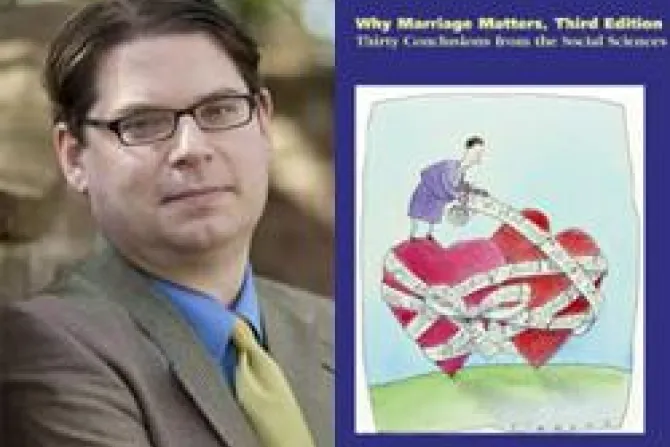New York City, N.Y., Aug 16, 2011 / 23:31 pm
Family instability continues to grow in the U.S. despite falling divorce rates for families with children. Researchers say an increase in cohabitation is part of the problem, adding that society’s “retreat from marriage” harms children and has particularly hurt poor and working-class communities.
“In a striking turn of events, the divorce rate for married couples with children has returned almost to the levels we saw before the divorce revolution kicked in during the 1970s,” said Prof. W. Bradford Wilcox of the University of Virginia.
“Nevertheless, family instability is on the rise for American children as a whole. This seems in part to be because more couples are having children in cohabiting unions, which are very unstable,” he said.
Wilcox is the lead author of “Why Marriage Matters: Thirty Conclusions from the Social Sciences,” a report from the New York-based Institute for American Values’ Center for Marriage and Families.
More than 40 percent of U.S. children now spend time in a cohabiting household. They are much more likely to experience a parental breakup than children of married couples.
In the U.S., the breakup rate is 170 percent higher for children born to cohabiting couples up until age 12.
Wilcox said children of cohabiting parents are more likely than those from intact married families to suffer from “a range of emotional and social problems” such as drug use, depression, and dropping out of high school.
The report surveys more than 250 peer-reviewed journal articles on marriage and family life in the U.S. and around the world. It also has original analysis of data from the General Social Survey and the Survey of Income and Program Participation.
“(W)hether we succeed or fail in building a healthy marriage culture is clearly a matter of legitimate public concern and an issue of paramount importance if we wish to reverse the marginalization of the most vulnerable members of our society: the working class, the poor, minorities, and children,” the report’s executive summary said.
The report found that children in cohabiting households are at least three times more likely to be physically, sexually or emotionally abused, compared to children from intact marriages between their biological parents.
Researchers have also discovered that family stability is part of a class divide. Children from college-educated homes have seen their family lives stabilize, while children from less-educated homes have seen their lives become increasingly unstable. The highly affluent enjoy “strong and stable” families while others face “increasingly unstable, unhappy and unworkable ones.”
Divorces involving children have largely returned to levels before marriage laws were changed for easier divorce. About 23 percent of children whose parents married in the early 1960s saw their parents divorced by the time they turned 10. The numbers for children whose parents married in 1997 were nearly similar.
The report authors concluded that an intact marriage between biological parents remains the “gold standard” for family life in the U.S.
“Children are most likely to thrive, economically, socially, and psychologically, in this family form,” the Institute for American Values said in an Aug. 16 statement. Marriage is “an important public good” with a range of economic, health, educational and safety benefits that help all levels of government serve the common good.
The benefits of marriage also extend to poor, working class and minority communities, despite the weakening of marriage in these demographics in the last four decades.
“(T)he rise of cohabiting households with children is the largest unrecognized threat to the quality and stability of children’s lives in today’s families,” the institute said.
(Story continues below)



